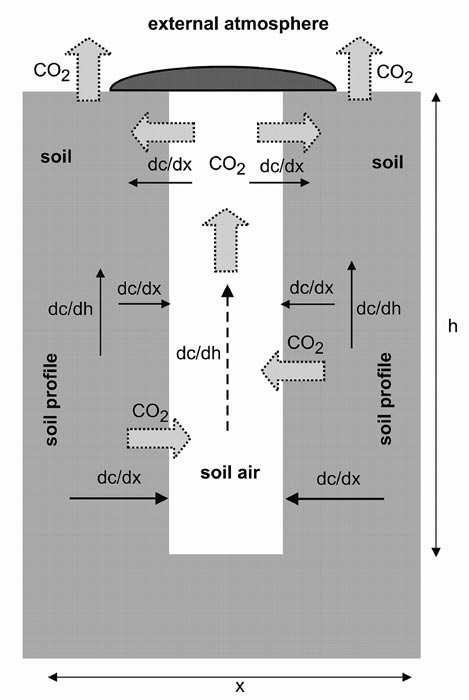What is the soil capacity for providing obvious karst CO2 concentrations?
DOI:
https://doi.org/10.3986/ac.v43i1.645Abstract
Soil CO2 was studied in the Moravian Karst (Czech Republic). It was found that the CO2 concentration in soil pores depends inversely on pore dimension. The simplified relation between soil drill-hole diameter and measured CO2 concentration,cCO20 = (cCO2 - b D)/(1+a D), was derived (where cCO20is the CO2 concentration extrapolated to the drill-hole zero diameter in ppmv, cCO2 is directly measured CO2 concentration in ppmv, D is drill-hole diameter in cm, and a, b are parameters in cm-1 and ppmv cm-1, respectively). For the diameter lesser than 7 cm and the individual karst soils formed at grass meadow and deciduous forest, the values of a and b parameters ranged from -0.135 to -0.160 cm-1 and from 88 to 422 ppmv cm-1, respectively. For the heavy clay soils of coniferous forest, however, no dependence between cCO2 and D was found. To understand the dependence better, a conceptual model was proposed in terms of concentration gradients and fluxes. The work results re-open the question whether soils are capable to provide the CO2 concentrations obviously monitored/deduced in karst environment.Downloads
Download data is not yet available.

Downloads
Published
2014-09-02
How to Cite
Faimon, J., & Blecha, M. (2014). What is the soil capacity for providing obvious karst CO2 concentrations?. Acta Carsologica, 43(1). https://doi.org/10.3986/ac.v43i1.645
Issue
Section
Original papers
License
Authors guarantee that the work is their own original creation and does not infringe any statutory or common-law copyright or any proprietary right of any third party. In case of claims by third parties, authors commit their self to defend the interests of the publisher, and shall cover any potential costs.
More in: Submission chapter




